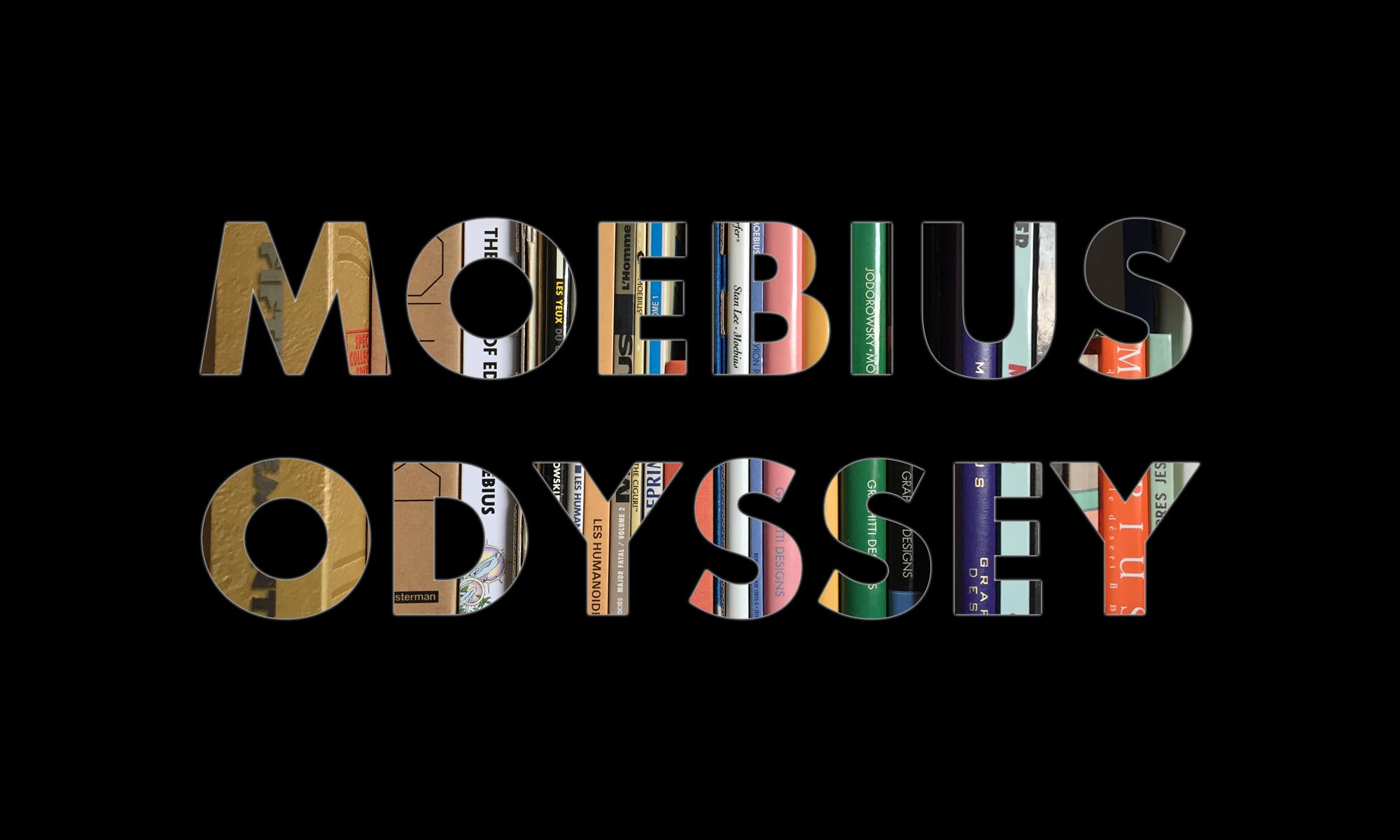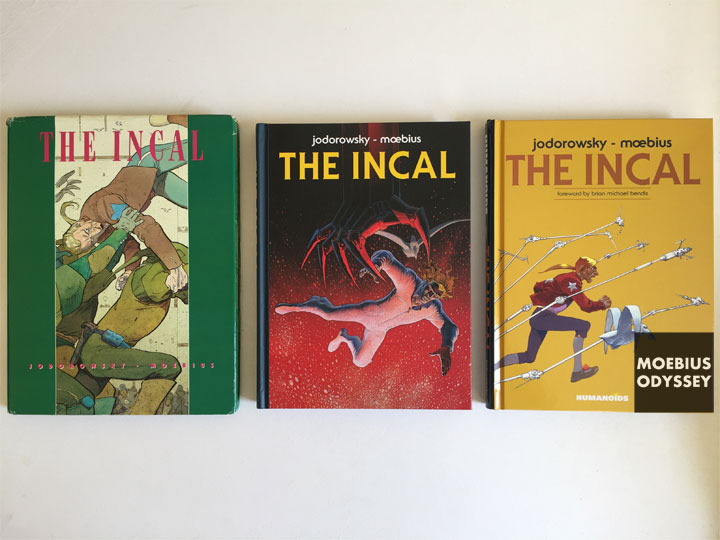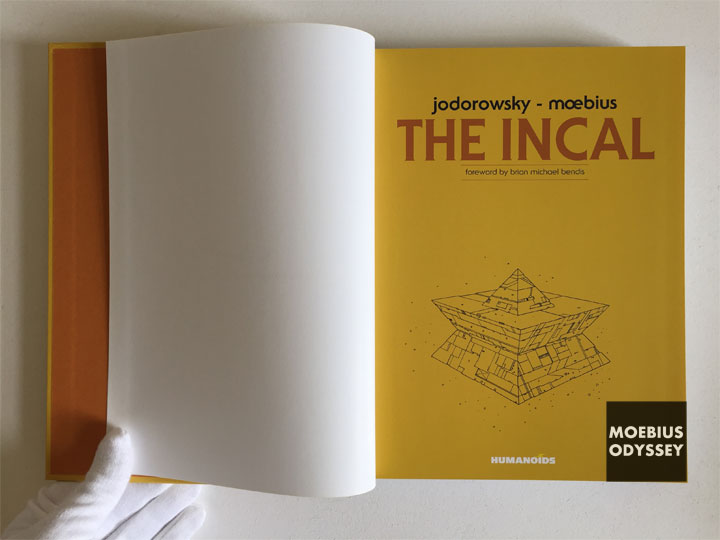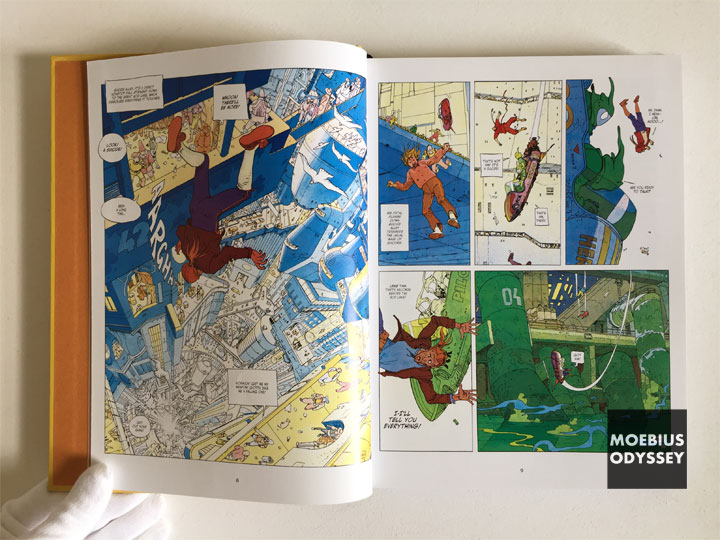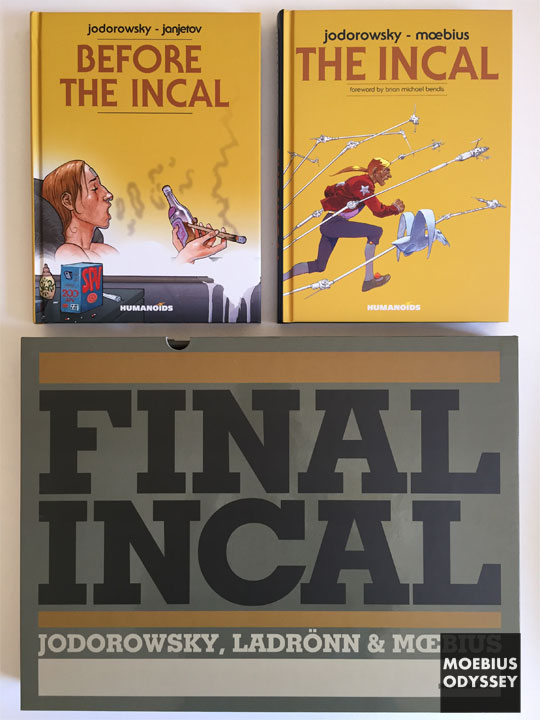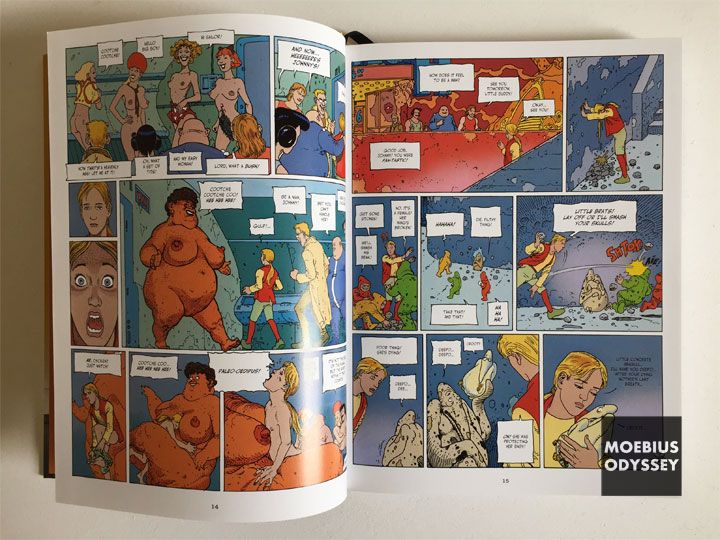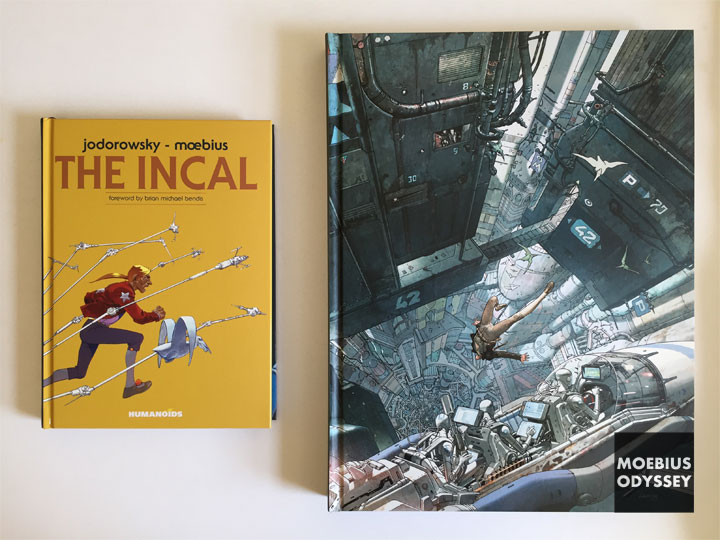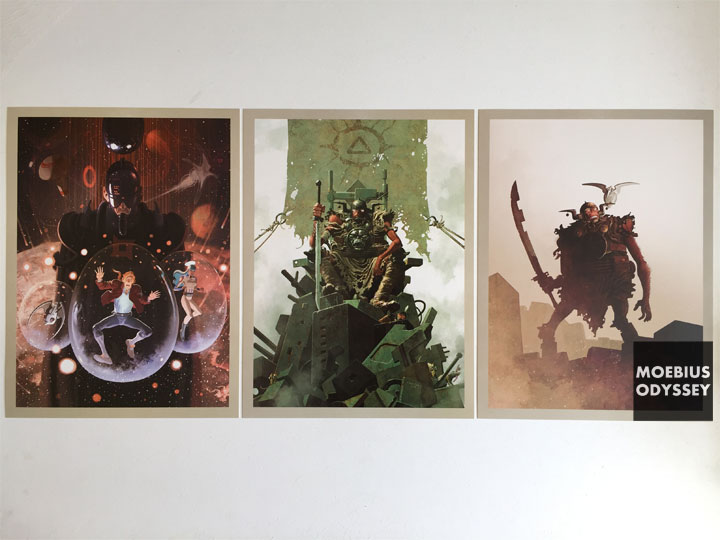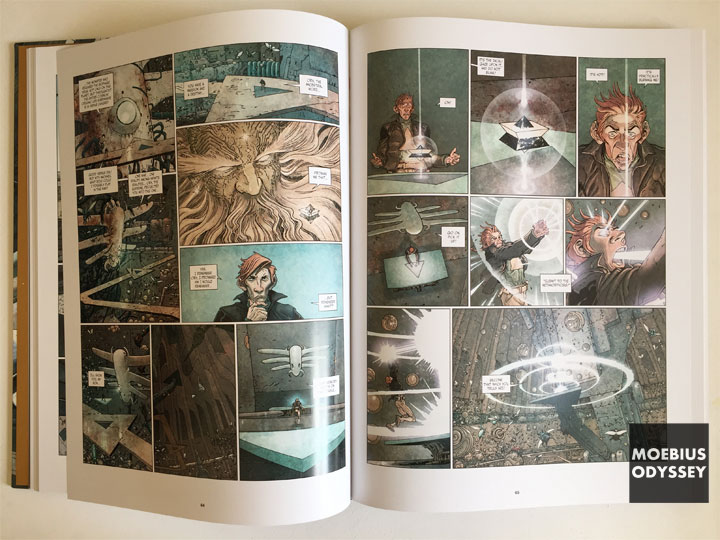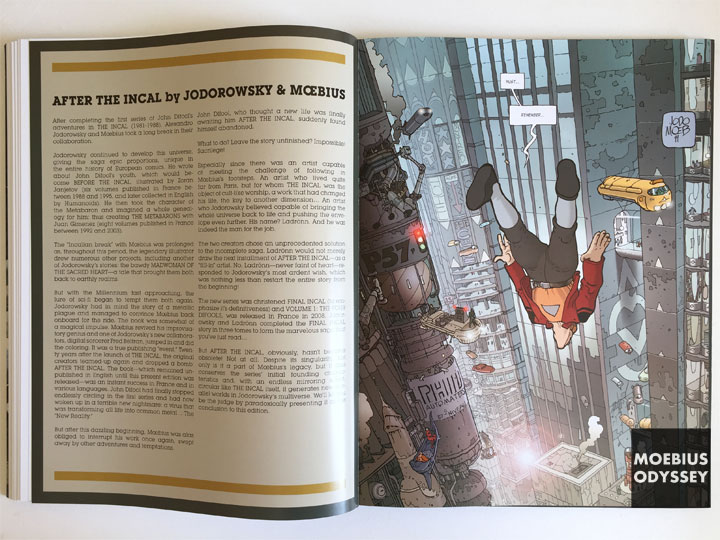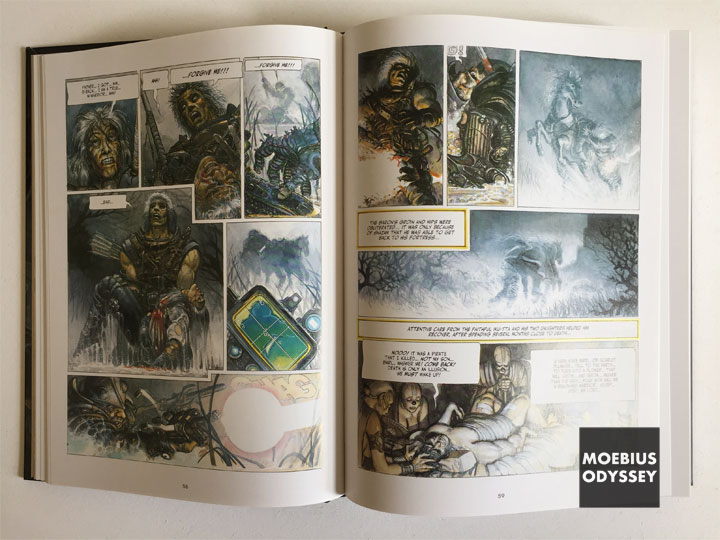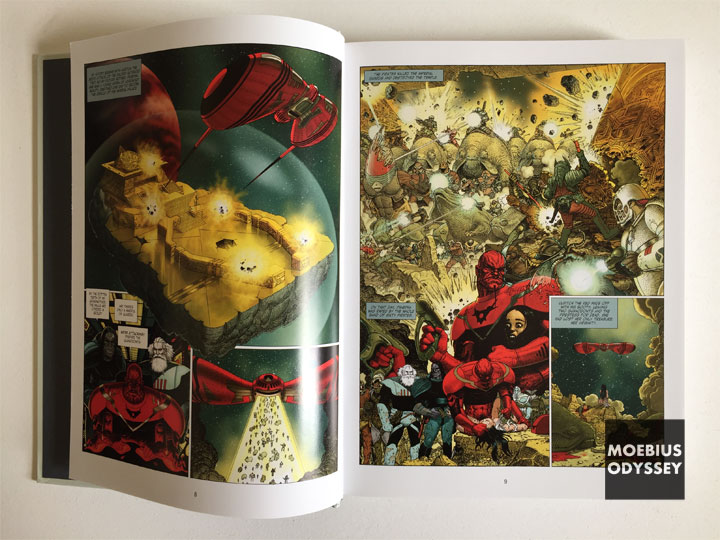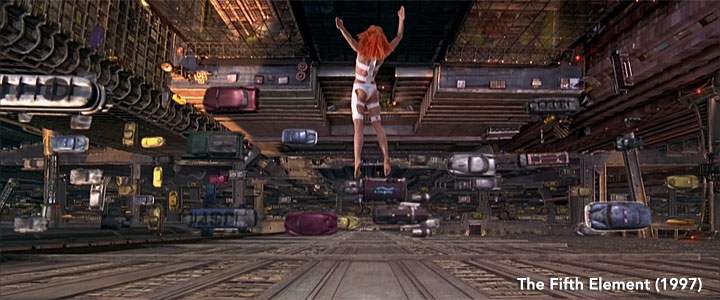Silver Surfer: Parable (1988-1989)
Marvel/Epic Comics
17.5 x 26.3cm, 49 pages
If ever there was a defining moment where the stars aligned so perfectly to fill the night skies with heavenly wonder it would be in the seminal Moebius and Stan Lee work Silver Surfer: Parable, which introduced Moebius to a whole new Anglophone audience and would be for many (including myself, the author) a first taste of Moebius’ magnificent art.
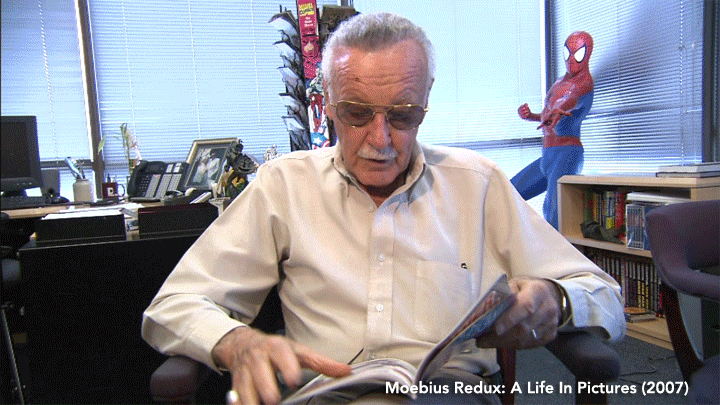
In the foreword to Silver Surfer: Parable, Stan Lee writes about the conception of the project:
“I ran into Jean (Moebius) Giraud early in ’88 at the Anaheim Book Fair in California. One thing led to another and we ended up having lunch. Jean’s friend and representative, Jean-Marc L’Officier, turned to him and asked, “Why don’t you and Stan do a strip together?” During our conversation, Jean mentioned that he’d found The Silver Surfer very fascinating. I smiled. It was what I’d hoped he’d say.”
For Moebius to choose Jack “The King” Kirby’s cosmic powered rider of the spaceways Silver Surfer and former herald of the world consuming Galactus was a perfect choice in Stan Lee’s opinion:
“I’ve always felt that the Surfer’s style particularly lends itself to poetic lyricism and philosophical musings – and Moebius himself has the soul and the leanings of a poet/philosopher.”
Silver Surfer: Parable begins with an ominous sighting of a bright object in the night skies over New York which sets the population of Earth into a panic. The celestial object is not a shooting star or a meteor as previously thought but in fact a gigantic space vessel descending at great speed towards Earth’s surface. Just before the extraterrestrial spacecraft makes contact with terra firma, a bright beam of energy bursts forth from inside it, revealing the cosmic entity known as Galactus who addresses the world’s stage and declares to all it’s inhabitants that now is the ushering in of a new age of Galactus. Whilst this galactic encounter on purportedly peaceful grounds is going on, a mysterious raggedy garbed vagrant looks on from the distance and questions the true motives of this god-like being. Televangelists are quick to capitalise on this moment and claim themselves to be prophets of this Galactus who they believe to be omnipotent and benign all the while human laws and society begin to crumble into chaos all around.




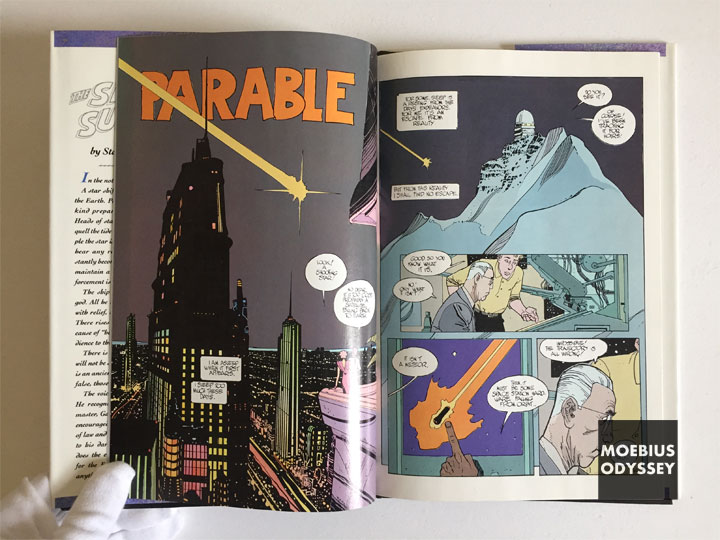


Silver Surfer: Parable although written in the latter part of the 1980s touches on points that are sadly still prescient and relevant to the uncertain times we live in today. Truths such as power attracting the corruptible, the ruthless rise of the demagogue, communities being torn apart through fear and the voice of reason being drowned out by ignorance.
In the addendum ‘The Making of Silver Surfer: Parable’, Moebius recalls meeting Stan Lee (and also Mike Hobson) for that pivotal lunch at the San Diego Comic-Con (1986?) instead of the Anaheim Book Fair as mentioned by Stan Lee earlier in the foreword.
When getting down to work on Silver Surfer: Parable, Moebius found it initially quite challenging as he was in unfamiliar territory having never made a ‘Real American comic book’ before and admits that:
“THE SILVER SURFER was possibly one of the toughest assignments I ever had”.
To help approach the project Moebius thinks back to his days at Métal hurlant in France:
“When I was working at Metal Hurlant, in the 1970’s, I had seen Philippe Druillet draw a story in a fashion that has always fascinated me. It was a strip called Vuzz. Now, normally, Philippe was known for his elaborate architectures, full of intricate details. But Vuzz was something very simple that he just drew spontaneously on a sheet of paper. It was almost like drawing a storyboard. I thought it was really wonderful. It really astounded me and I never forgot that feeling. When I started on THE SILVER SURFER, I remembered Philippe’s Vuzz, and the spontaneity that he had achieved. That’s something that helped me start.”
Moebius upon receiving the story from Stan Lee shortly after their eventful lunch:
“This is the first time in my life that I worked in the so-called “Marvel method”. Stan (Lee) gave me a fairly detailed plot – about six pages – but no breakdowns or dialogue. I loved this way of working… It really is the way I write my own stories, except that, instead of having Stan’s plot in front of me, my plot is in my head.”
Moebius wanted his interpretation of the characters to be both fresh but familiar to the reader:
“The idea of doing the Surfer made me nervous at first because, again, it is a character who did not spiritually emanate from me, but had been already formalized by other artists, such as Jack Kirby and John Buscema. They made him athletic, powerful, a warrior almost. I wanted to touch upon that aspect also, but without copying them.”
Such was the critical acclaim received upon it’s release that Silver Surfer: Parable would go on to win the Eisner Award for “Best Finite/Limited Series” in 1989 and also be immortalised on film in a scene from Tony Scott’s (younger brother of Ridley Scott) 1995 movie Crimson Tide where a fight breaks out between 2 crew members onboard a nuclear submarine over a difference of opinion between which interpretation of the Silver Surfer was better: Jack Kirby’s or Moebius’. In the CTN animation eXpo 2010 – An evening with Moebius interview hosted by Animation Director John Musker, Moebius is reminded of a time he watched Crimson Tide (1995) in a cinema in Paris and being taken aback to hear his name and work namechecked in the movie in front of him and that receiving this kind of homage was in his own words “Better than a big statue”. Also in the interview a question is raised on who the actual author of that scene was from Crimson Tide and Moebius reveals in a meeting with it’s director:

“I met Tony Scott, I think, 5 years ago and I asked him if it was (Quentin) Tarantino? He said “No, it’s an urban legend, it’s me!” and I believe him.”
Farewell to these giants…
Jacob Kurtzberg “Jack Kirby”
28th August 1917 – 6th February 1994
Giovanni Natale “John” Buscema
11th December 1927 – 10th January 2002
Anthony “Tony” David Leighton Scott
21st June 1944 – 19th August 2012
